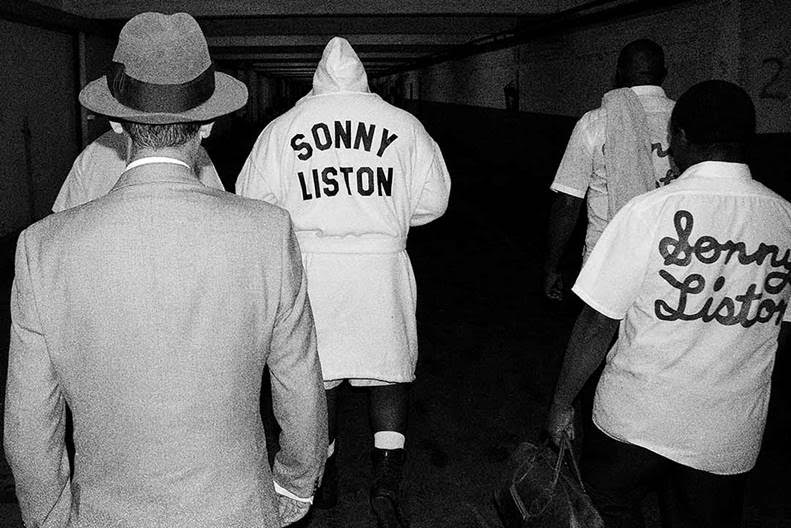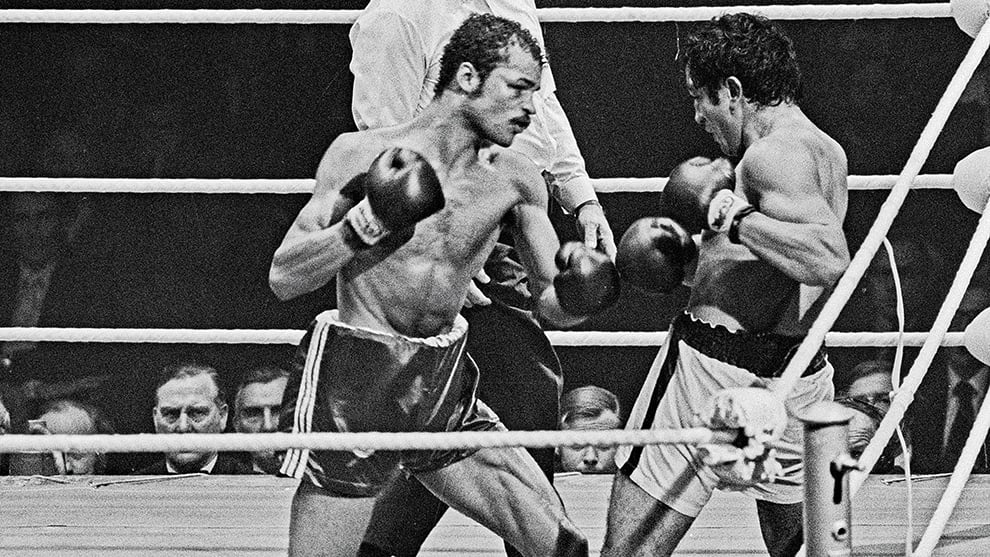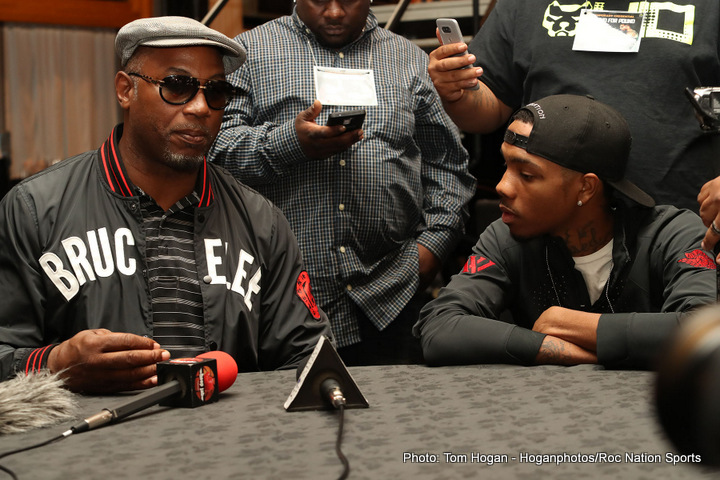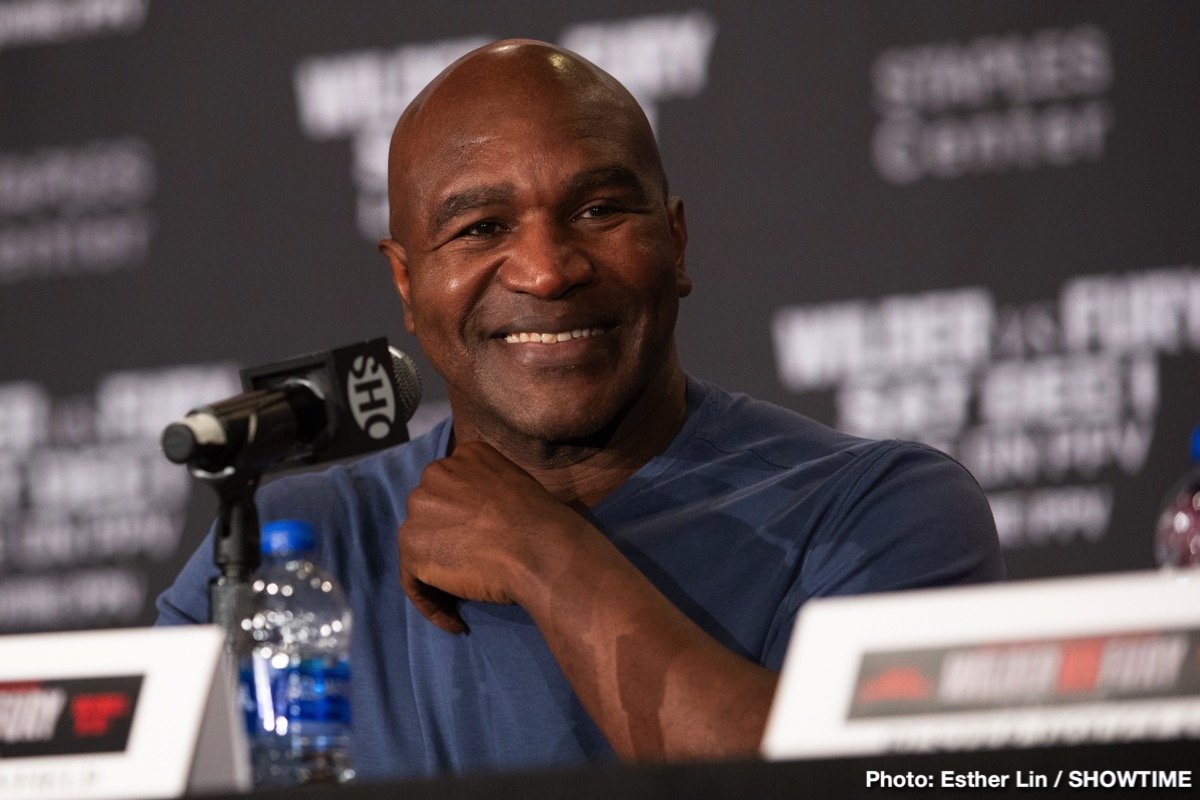Boxing History
50 Years Ago: When the Mysterious Sonny Liston Died… Mysteriously
Published
3 months agoon

Today marks 50 years since the death of heavyweight king Charles “Sonny” Liston. Officially aged 38, Liston officially died on December 30, 1970 in his Las Vegas apartment. However, the exact date of Liston’s death is unknown, as is the cause of death. Liston’s wife, Geraldine, returned from a Christmas trip to find her husband dead, his body already in an advanced state of decomposition, and this happened on January 5, 1971.
Liston was found slumped on a bed. To this day, there are varying stories about how Liston met his end. Some say it was a heart attack, others that Sonny was addicted to drugs, accidentally overdosed, or deliberately. The most popular theory is that Liston was murdered by a mob. Many books have been written on the subject, some excellent, others not so well written. But the fact is that Liston remains a fascinating figure all these years later.
No one knows for sure when Sonny was born—some say 1929, others suggest later—but for a relatively compact time, Liston was a truly magnificent fighting machine. The best years of his career were from 1958 to 1963. Liston was considered nearly unbeatable. Good fighters like Cleveland Williams, Nino Valdes, Roy Harris, Zora Folley, Eddie Machen, and Floyd Patterson were all defeated by Liston, and all but Machen were crushed. From 1955 to 1964, Liston never lost a fight.
By the time he won the world title by annihilating Patterson, Sonny was already an “antique” man, perhaps 33 or older. Certainly, by the time he was shockingly upset by 22-year-old Cassius Clay in February 1964, Liston was far from his best. Of course, Liston’s two losses to Clay, who would soon become Muhammad Ali, are the subject of much debate and controversy; the pair of fights proved almost as mysterious as Liston’s death.
Some say without a shadow of a doubt that both fights were fixed, and Sonny lost by prearranged agreement. Others say with equal certainty that Liston was beaten fairly in both fights. It’s a feud that may never end.
Liston landed in Las Vegas, officially in his thirties, but more likely in his mid-forties or even early forties. At the time, Liston was still fighting fairly regularly (seven fights in 1968, all wins, four fights in 1969, three wins and a KO loss to Leotis Martin, and one fight in 1970, a bloody victory over Chuck Wepner), but stories say he was using and dealing drugs along the Strip. Maybe Liston actually got into a fight with the mob and they took him down. We’ll never know.
But Liston remains a popular fighter, not just a mystery. Fight fans still watch Liston’s devastating displays in the ring, often in awe. Possessing a powerful left jab that some say was the greatest in heavyweight history, Liston also had brute strength, a granite chin, an incredible 84-inch reach, and good hand and foot speed. For a time, he truly looked unbeatable. In fact, if not for the emergence of the man who would become the greatest heavyweight in history, Sonny Liston might have reigned supreme for many, many years.
Today, Liston’s grave in Vegas attracts a gigantic number of tourists every year. These fans come to pay their respects to Liston. As the plaque on his grave says, he was “The Man.”
Charles “Sonny” Liston: 1930–1970. Heavyweight champion 1962–1964. Final ring record: 50-4(39).
You may like

On October 20, London’s Connaught Rooms restaurant hosted a full house for a luncheon in tribute to John Conteh, MBE.
The event was organized by London-based EBA Secretary/Treasurer Ray Caulfield and long-time LEBA benefactor Scott Ewing (John is LEBA Vice-President) to mark the 50th anniversary.vol anniversary of John winning the vacant WBC delicate heavyweight world title after defeating Argentine Jorge Ahumada on October 1, 1974.
But as Scott Ewing said in his opening speech, it was much more about John Conteh the person than the boxer. “John did so much for so many people,” Scott said.
He then described John’s work with Alcoholics Anonymous (“He brought so many back”) and the Variety Club, noting that John was only the second person (besides Jimmy Tarbuck) to be named captain of the Variety Club golf team. “He travels all over the country visiting EBA – he’s a great ambassador,” Scott said, explaining that John was also a major supporter of the Ringside Charitable Trust.
MC John McDonald did a great job all afternoon. He introduced many boxing personalities including world champions Frank Bruno MBE, Steve Collins MBE, Maurice Hope MBE and Colin McMillan BEM. (Bruno received thunderous applause, as did Michael Watson MBE.) There were also stars from other sports, including: Charlie George (football) and Phil Taylor (darts). As you can imagine, LEBA was well represented. I was also delighted to see EBA Croydon chairman Pat Doherty and Brighton stalwart Harry Scott.
Former European and Commonwealth heavyweight champion (and LEBA member) Derek Williams paid tribute to Conteh, describing him as a “true boxing legend”. “Your name has stood the test of time,” Derek said, noting that John had to overcome many challenges and obstacles, and in doing so, he “paved the way for other black warriors.” He said John had “made his mark on boxing” and described him as “boxing royalty”, concluding simply: “Thank you for everything you’ve done.”
We saw a video of John in action – two KOs early in his career, his 12thvol– a round of stoppage of the German Rudiger Schmidtke in the fight for the European delicate heavyweight crown, his two fights with the tardy Chris Finnegan (the first brought John the Briton and Commonwealth titles). And finally, Jorge Ahumada scores those great points.
I was ringside at Wembley that night. As for the BN staff, I was tasked with doing a preview of Conteh-Ahumada and I chose Ahumada, but ended with, “Prove me wrong, John.” And I have never been happier to be proven wrong! John’s brilliant performance really made me feel proud to be British.
A segment of John’s This Is Your Life (a very popular long-running TV show) was also filmed, in which Paul McCartney paid tribute to his fellow Liverpool native, and tributes from boxers who were unable to attend the event were also filmed. These included former world champions Johnny Nelson, Ricky Hatton and Jim Watt – as well as a tribute from boxing writer and broadcaster Adam Smith, who described John as “one of the greatest British fighters produced since [Second World] War.”
British boxer John Conteh during his WBC delicate heavyweight title fight against Argentine Jorge Ahumada at Wembley, October 1, 1974. Conteh won the fight on points and was crowned world champion. (Photo: Keystone/Hulton Archive/Getty Images)
There was a very successful auction, conducted partly by Ray Caulfield and Scott Ewing and partly by John himself. John has an excellent reputation as an auctioneer at charity events and was in excellent shape. Entertainment was provided by Muhammad Ali Jr, who had everyone laughing with his impressions of his father, and comedian Bobby Davro.
As a nice gesture, John was given his WBC championship belt back – and in a low, modest speech, John thanked everyone for coming. He thanked his family, of which there was a lot – including his wife Veronica (they have been together for 50 years) and children James and Joanne. He also thanked Charles Atkinson, coach at Kirkby ABC, who started John on the path that ultimately led to the world title.
A wonderful tribute to a true boxing legend – and congratulations are in order to Ray Caulfield and Scott Ewing. These events don’t organize themselves
Boxing History
On this day: Lennox Lewis righting the wrong he committed in South Africa by hitting out at Hasim Rahman
Published
6 days agoon
November 17, 2024
Talk about pole work or a knockout when it matters most. Revenge Knockout. On this day in 2001, heavyweight great Lennox Lewis did the job he should have done when he first met Hasim Rahman. Instead, in April this year in South Africa, an ill-prepared (mainly for the altitude) Lewis was run over by a huge right hand from “Rock” Rahman. Rahman’s fifth-round KO victory is now seen as one of the greatest upsets in heavyweight history.
But Lewis, who ended up brawling with Rahman in a TV studio as the second fight approached, had sweet revenge. And it meant so much to Lewis, an avid chess player, that his KO would come sooner than Rahman’s.
They met at Mandalay Bay in Las Vegas, and the fight was dubbed “The Final Judgment”. Lewis scored his most satisfying KO of his career.
Lewis, this time fit and piercing, was seven years older at 36 and yet, as it turned out, still close to his best. Rahman (35-2(29)) held the title for seven months and then it was all over. Lewis, 38-2-1(29) entering, lowered the sonic boom in round four.
After inflicting a minor cut above Rahman’s eye in the first round, Lewis also went through the next two rounds. Then, in round four, Lewis landed a brutal left-right combination to the head that sent Rahman’s senses into orbit. Rahman fell, tried to get up, and then fell again. It was the kind of ugly, humiliating knockout defeat that all fighters dread.
Lewis argued with him after the fight, calling Rahman “Has-been Rahman”.
Lewis exacted savage revenge, and while Rahman’s KO was stunning in the first fight, Lewis’ thunderous and thunderous KO made us all almost forget what happened in the first fight. Lewis scored many great knockouts during his ring career, including knockout/stoppage wins over Razor Ruddock, Frank Bruno, Andrew Golota, Shannon Briggs, Michael Grant, Frans Botha and Mike Tyson.
But the ice work Lennox did on that day some 23 years ago is one of his most special.
Boxing History
40 years ago: the “real opportunity” of a ring career began
Published
1 week agoon
November 15, 2024
It may be somewhat ironic that on the day Mike Tyson steps into the ring again, his most demanding rival in the ring turned professional on the same day some 40 years ago. Evander Holyfield, who kicked Tyson’s ass twice (well, once when he was about to repeat the task before Tyson went completely off the hinges and bit his ear off!), was of course part of the famed American Olympic team that conquered in Los Angeles, with other future stars Pernell Whitaker, Meldrick Taylor, Mark Breland and the less fortunate Tyrell Biggs are all professionals on the same card.
It took place at Madison Square Garden four decades ago, and Holyfield, who turned professional as a lithe heavyweight, won a six-round decision over Lionel Byarm. Holyfield was 22 years elderly at the time, and no one – like no one – could have had any idea how great the ring career of “The Real Deal” would be.
Holyfield, disqualified in the second round of the 1984 Olympic semi-finals, had to settle for bronze. Then he filled his trophy cabinet with gold, a whole cart full of gold.
Today, Holyfield is considered the best cruiserweight of all time, and only the great Oleksandr Usyk can claim to be better or as good as him at that weight. Holyfield gave us his first all-time cruiserweight classic in his 15-round war with the great Dwight Muhammad Qawi. Holyfield went through hell to win by split decision, and the fresh champion had to go to hospital to have his body fluids replaced with an IV drip. Holyfield thought long and challenging about quitting the sport because the battle with Qawi was so tough.
But Holyfield was now the world champion, and his team assured him that he would never have to go through such an ordeal again. It’s possible, even considering the wars Holyfield would find himself in at heavyweight, that no one has ever pushed him as challenging or as consistently as Qawi.
After the unification of the cruiserweight division, Holyfield obviously moved up, and there was already talk of a megafight with heavyweight king Mike Tyson. The two sparred for one round and now we know that Evander won. Tyson could intimidate almost everyone he fought, but he was never able to get to Holyfield like that. Holyfield will have to wait a few years before he gets his substantial chance against Tyson.
First came victories over Buster Douglas to become the heavyweight champion, and Holyfield held on for victories over George Foreman (in a monster PPV hit), Bert Cooper (his first date with Tyson postponed) and Larry Holmes. Before Evander had his first epic fight with Riddick Bowe. Holyfield lost to Bowe on points in 12 hotly contested rounds, but his huge heart was never so, well, huge. The rematch came and Holyfield got his revenge. Evander then lost to Michael Moorer and suffered a heart attack during the fight. This was definitely the end.
No, “cured” and armed with a fresh moniker, “Warrior,” Holyfield returned to the top of Ray Mercer, and then came the rubber match with Bowe. After defeating Bowe, Holyfield ran out of gas and was stopped for the first time in his career. This was definitely the end. No, again.
Holyfield scored a victory over Bobby Czyz while looking decidedly ordinary in the process. Then came the fight with Tyson – “Finally.” Tyson was released from prison and regained two pieces of the crown with basic and quick victories over Frank Bruno and Bruce Seldon. Tyson was the overwhelming 25/1 betting favorite at Holyfield, and people around the world were worried about Evander’s health and even his life.
In his most stunning victory, Holyfield defeated Tyson, dropped him, and then stopped him at the end of round 11. Holyfield was now the king of kings. Well, almost. Lennox Lewis would have to be defeated to remove any doubt as to who is the heavyweight king. First came the comeback with Tyson and the infamous “Bite Fight”. Then, with his ear patched, Holyfield took revenge on Moorer by stopping him for eight.
And then came two fights with Lewis, the first fight was called a draw and was considered one of the worst and most controversial decisions in boxing history. In the rematch, Holyfield performed better, but still lost by decision. Amazingly, Evander was able to fight for another 12 years!
The highlight of this period of unnecessary fighting was the victory over John Ruiz, thanks to which Holyfield won the vacant WBA heavyweight belt, making him the only four-weight champion in history. But the good times, good performances and victories began to end. Holyfield lost then drew to Ruiz, lost to Chris Byrd and was stopped by James Toney. However, Holyfield still refused to retire.
Only after defeats to Sultan Ibragimov and Nikolay Valuev (in a fight in which Holyfield was so close to winning, and if it had been, he would have been a five-time heavyweight champion) did Evander finally hang them up with a TKO defeat of Brian Nielsen.
It was one hell of a journey up and down, but most of all up! Holyfield won with a score of 44-10-2(29). Today, after attempting to come back and box on the show circuit while 59-year-old Holyfield was embarrassingly stopped by Vitor Belfort in 2021, Evander will be watching how his elderly rival Mike Tyson fares as he tries to fight on the show again at the age of 58 years.
But what a career Holyfield had. And it started today, 40 years ago.

Jake Paul BRUTALLY HONEST on Mike Tyson LOSING LEGENDARY POWER: ‘HE DIDN’T HURT ME!’

Queensberry vs Matchroom 5 vs 5 Review | #54

Darren Till threatens to kick Tommy Fury in the head after the match and risk disqualification
Trending
-

 MMA6 months ago
MMA6 months agoMax Holloway is on a mission at UFC 212
-

 Interviews1 month ago
Interviews1 month agoCarl Froch predicts that Artur Beterbiev vs Dmitry Bivol
-

 Interviews1 month ago
Interviews1 month agoArtur Beterbiev vs Dmitry Bivol
-

 MMA6 months ago
MMA6 months agoCris Cyborg ready to add a UFC title to her collection
-

 MMA6 months ago
MMA6 months agoThe Irish showed up in droves at the Mayweather-McGregor weigh-in
-

 Boxing4 months ago
Boxing4 months agoLucas Bahdi ready to test his skills against Ashton Sylve
-

 Interviews6 months ago
Interviews6 months agoI fell in love with boxing again
-

 Opinions & Features1 month ago
Opinions & Features1 month agoDmitry Bivol: The story so far



